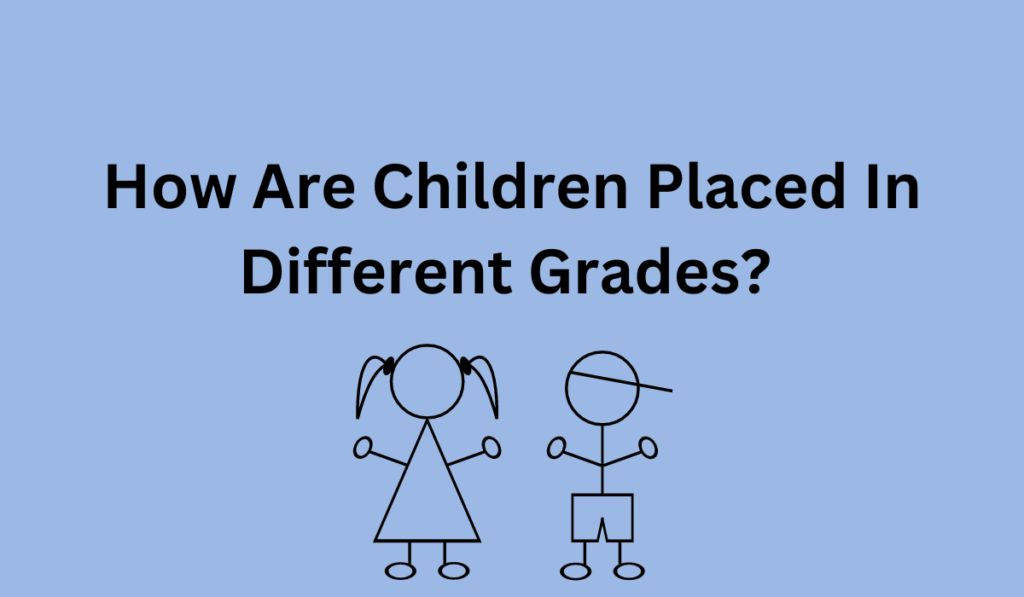
Education for children in the United States is mandatory under state laws, which means every child must receive a formal education. Thankfully, parents have a variety of options available to ensure their children receive an education, whether they are preschoolers, grade-schoolers, or teenagers.
Academic help and resources, including academic assignments, are readily available through websites like Do-My-Essay. In this post, we’ll explore the age ranges for each grade level and what parents can expect from their child’s education at each level in the United States. Let’s dive in and answer some important questions.
What ages go with each grade in America?
| Age | International Grades |
| 4-5 | Pre-school |
| 5-6 | Kindergarten |
| 6-7 | Grade 1 |
| 7-8 | Grade2 |
| 8-9 | Grade3 |
| 9-10 | Grade4 |
| 10-11 | Grade5 |
| 11-12 | Grade6 |
| 12-13 | Grade7 |
| 13-14 | Grade8 |
| 14-15 | Grade9 |
| 15-16 | Grade10 |
| 16-17 | Grade11 |
| 17-18 | Grade12 |
What Is Preschool?
The United States education system is divided into grade levels, with each grade level encompassing a specific age range. This system provides a structure for education and helps to ensure that children receive the necessary knowledge and skills at each stage of their development.
Preschool is the first level of formal education that children receive in the United States. It is typically for children aged 3 to 4 years old and serves as a preparation for kindergarten.
The primary focus of preschool is to provide children with a safe and nurturing environment to learn and develop social, emotional, and cognitive skills. Children in preschool learn through play, interactive activities, and exploration of their surroundings.
What Is K-12?
K-12 education refers to the system of education in the United States that spans 13 years, from kindergarten (K) to the 12th grade. The American education system is designed to provide a comprehensive education to all students, with a focus on developing critical thinking, problem-solving, and communication skills.
In the American education system, each grade level has a designated age range. Kindergarten is the first year of formal education for children, usually starting at the age of 5 or 6. From there, students progress through the elementary school grades, which include first through fifth grade, and then move on to middle school, which typically encompasses sixth through eighth grade.
High school education in the United States covers the final four years of the K-12 system, from ninth through twelfth grade. In high school, students take a more specialized approach to their education, choosing elective courses in addition to required core classes.
This is the time when students can explore their passions and interests and prepare for their future education and career goals.
It is important to note that the specific age ranges for each grade level may vary slightly depending on the state and school district. However, the K-12 system is consistent throughout the country and provides a framework for a well-rounded education for students of all backgrounds and abilities.
How Are Children Placed In Different Grades?

In the United States, the K-12 education system is designed to provide children with a well-rounded education that prepares them for life beyond high school. K-12 stands for kindergarten through twelfth grade.
This means that children usually start school at the age of five or six, in kindergarten, and continue through grade twelve until they are 17 or 18 years old.
Kindergarten is the first year of formal schooling for most children in the United States. Children who are five years old by the school’s cut-off date are eligible to attend kindergarten. The following grades, from first through twelfth, usually have age ranges of six to seven years for each grade.
This means that first graders are usually six or seven years old, while twelfth graders are usually 17 or 18 years old.
The K-12 system is designed to provide a structured learning environment that builds upon itself each year. Each grade level is designed to build upon the knowledge and skills learned in the previous year, with increasing levels of complexity and depth.
This allows students to develop a strong foundation of knowledge and skills that will prepare them for college, careers, and beyond.
In conclusion, K-12 education in the United States covers a range of ages, from five-year-olds in kindergarten to 18-year-olds in twelfth grade. The system is designed to provide a structured learning environment that builds upon itself each year, with increasing levels of complexity and depth to prepare students for their future.
Elementary Education In The United States
Elementary education in the United States typically consists of grades kindergarten through fifth or sixth grade, depending on the school district. Students usually enter kindergarten at age five or six and continue through the grades until age 11 or 12.
Kindergarten is the first year of elementary school and is considered a foundational year for children. It focuses on the development of basic academic and social skills, such as counting, letter recognition, socialization, and communication. The curriculum includes language arts, math, science, and social studies.
First grade is typically for students who are six or seven years old, and it builds on the foundation set in kindergarten. The curriculum is similar to kindergarten, but with more emphasis on reading and writing.
Students learn to read and write short stories, add and subtract numbers, and learn basic science and social studies concepts.
Second grade is for seven or eight-year-old students and continues to build on the skills learned in the previous year. The curriculum includes reading comprehension, addition and subtraction of larger numbers, and more in-depth science and social studies topics.
Third grade is for eight or nine-year-old students and is a transitional year, as students move from learning to read to reading to learn. The curriculum includes more complex reading comprehension, multiplication and division, and more in-depth science and social studies topics.
Fourth grade is for nine or ten-year-old students, and the curriculum includes more advanced language arts, math, science, and social studies topics. Students also start to develop research and study skills that will help them in later grades.
Fifth grade is for ten or eleven-year-old students and is the last year of elementary school for some school districts. The curriculum includes more complex writing and reading comprehension, more advanced math concepts, and more in-depth science and social studies topics. Students also start to prepare for the transition to middle school.
Secondary Education in The United States

Secondary education, also known as high school education, in the United States typically covers grades 9 to 12. Students enter high school at age 14 or 15 and graduate at age 18 or 19. The age-grade structure of high school education is crucial for understanding how students progress through their academic journey.
In the United States, high school students are typically in grade 9 when they start their first year of high school. Grade 9 students are also known as freshmen. They are 14 to 15 years old and are at the beginning of their high school journey.
During their freshman year, they take a variety of courses and begin to explore their academic interests.
Grade 10 students, also known as sophomores, are typically 15 to 16 years old. They continue to take core courses in English, math, science, and social studies, and they may also begin to take elective courses that align with their academic interests or career goals.
Grade 11 students, also known as juniors, are typically 16 to 17 years old. This is a crucial year for many students as they start to prepare for college or career options. Students may take standardized tests, such as the SAT or ACT, and begin to research and apply to colleges and universities.
Grade 12 students, also known as seniors, are typically 17 to 18 years old. They complete their high school journey during this year, and many start to make plans for post-secondary education or career opportunities. Seniors take a variety of courses that align with their interests and future goals.
In conclusion, understanding the age-grade structure of secondary education in the United States is crucial for students, parents, and educators. Knowing what ages are in what grades in the US education system can help students navigate their academic journey and plan for their future.
How Is The Public School Run?
The United States of America entrusts the responsibility of fundamental education to state and local governments. The country provides free education for K-12 students in either public or paid private schools.
Public schools receive funding from the federal, state, and local governments. However, the availability of resources varies in different regions due to the influence of local property taxes on school revenue. This makes a difference in the level of support each school can get.
In the United States, the state and local governments are mainly responsible for curricular decisions in public schools. The federal government has limited involvement in the running of public schools and rarely interferes.
The Superintendent of schools is typically responsible for the school district in public schools. The elected school board appoints this superintendent.
Conclusion
The United States of America prioritizes education and places great value on it. The main aim of education in the country is to provide children with the opportunity to succeed.